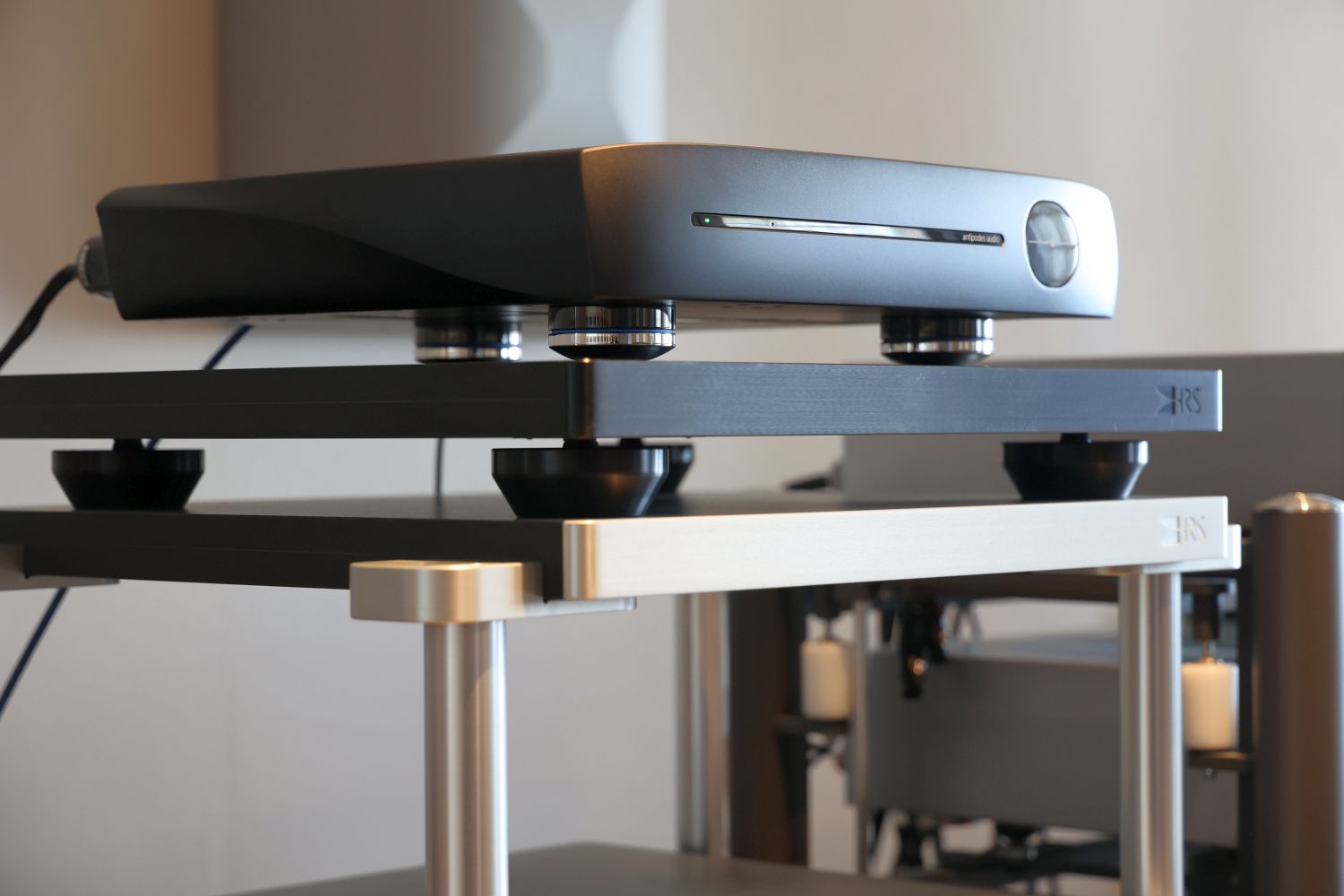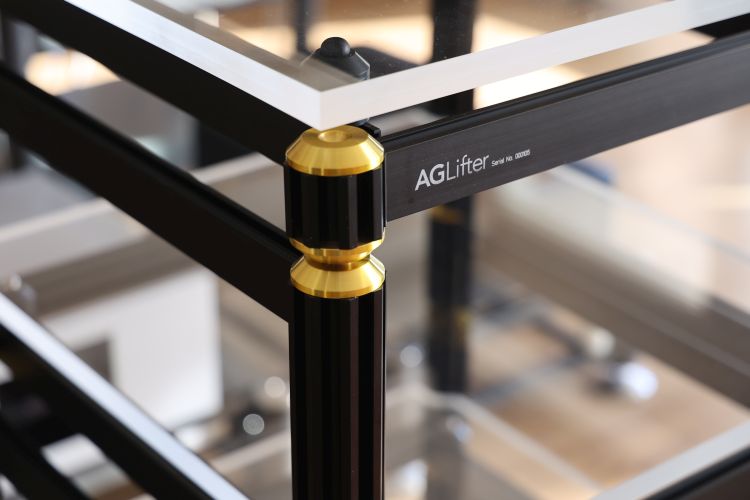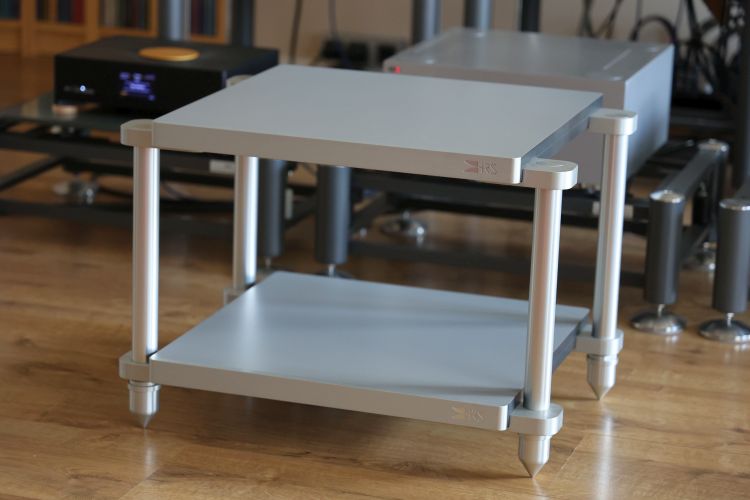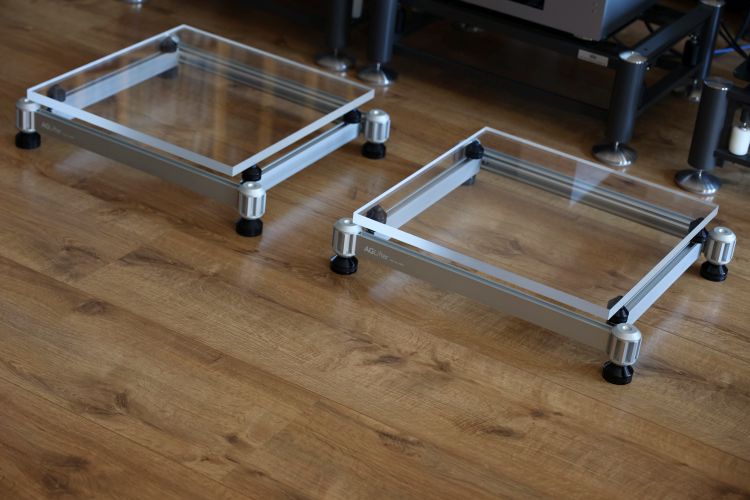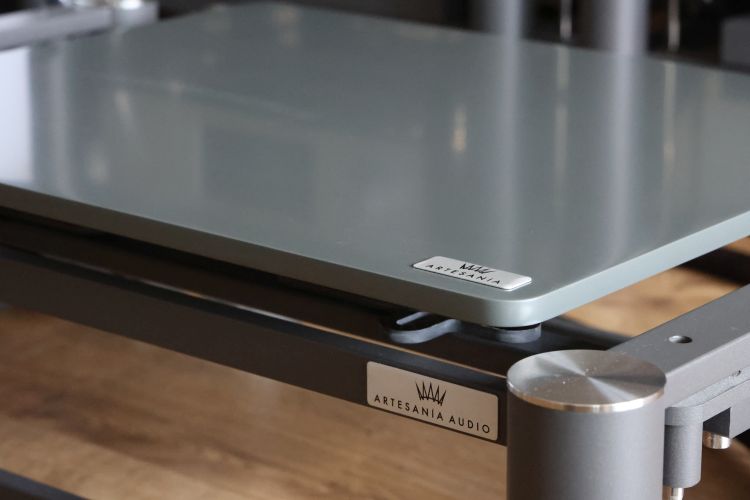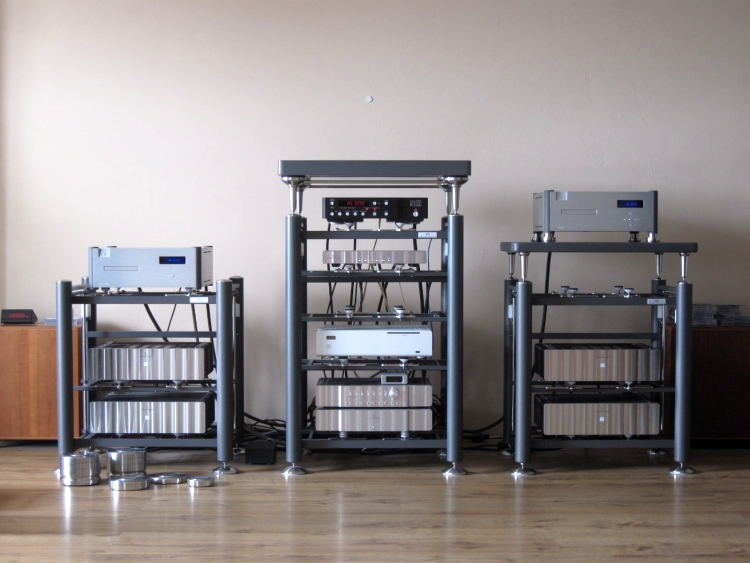
More turntables, Artesania Digital Server Platform and Dampers
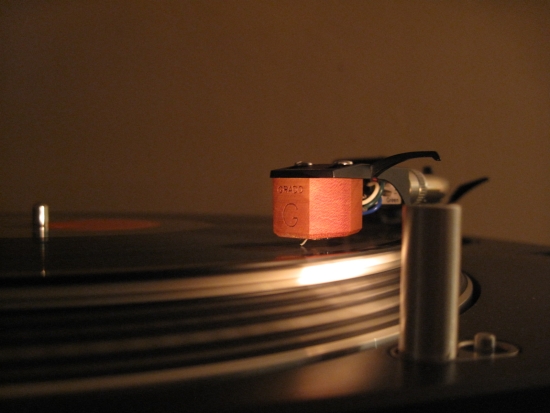
Can you guess what brand and type turntable the Grado Statement Platinum 1 is now mounted in?
Of course you can! Yes, it’s a Technics SL-1210. That’s the black version of the well known SL1200 which is perhaps the most well-known turntable in the universe. Hardly what one would call high end, and not the most characterful player in the world, but still I have to say that it performs admirably. It has a very neutral sound, and like the SL7 and SL10, it is very pitch accurate, and this aids DJ’s and audiophiles alike. You can read more about its sound in the Technics Linear Tracking Turntables review.
Technics SL-1210
I started my listening tests with the SL1210 with it placed on the Digital Server Platform. First cartridge used in it is the Grado Statement Platinum 1, which is adjusted with the excellent Acoustic Solid protractor and with VTF set to 1,4g. Set up like this, the SL1200 produces a somewhat thin, but dynamic, well paced, free-flowing and relaxed sound, with lots of air and great transparency. The Grado clearly works better in this arm than in the Avid’s SME309. The Digital Server Platform also seems to be a good match.
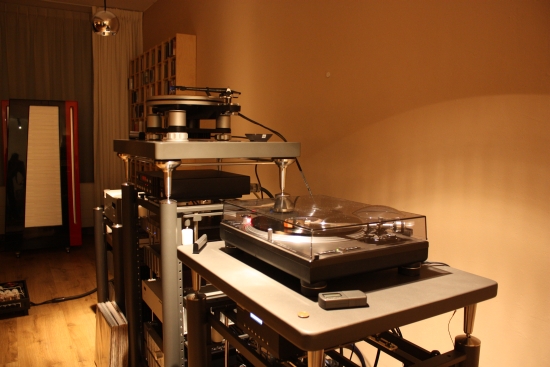
A pattern is starting to emerge: more accurate / less harmonically rich players seem to favor the less accurate / more colorful sounding Platform. It seems that once again this is a classic case of “matching is everything”. The Digital Server Platform may be much simpler than the Krion Platform, but the Krion is not always the best match. Nor could it be of course as it’s all relative after all.
As a cross-check I did try the Technics SL10 on the Digital Server Platform as well. Even though I now missed the extra articulation and transparency that the SL10 was capable of when set up on the Krion Platform, it was still a very musical presentation. The same was true with the Avid Volvere.
Speaking of which: now that I also had a Benz ACE SH high output MC cartridge at hand, I had to re-do the Avid tests. But that’s for later. First this cartridge was to be mounted in the SL1200.
![]()
Different Cartridge
Like the Grado, the Benz ACE Hi Output MC cartridge was adjusted using the Acoustic Solid protractor and after raising the tonearm to adjust for VTA and re-adjusting the VTF to the Benz’ recommended 1,7g, listening resumed.
Remember that I stated that the Linear Technics players tracked much better than the SL1200 with the Grado? Well, guess what? With the Benz ACE, the SL1200 tracks even better. All tracks including the last one track with superb clarity and no sibilant S’s anywhere. The Benz even tracks my most worn album as if it is in perfect shape. The secret is in the much more refined needle shape: a very fine line versus a normal elliptical shape for the SL7 and SL10.
Not only is the tracking much improved, so is the level of detail and the sense of listening to real acoustical instruments.
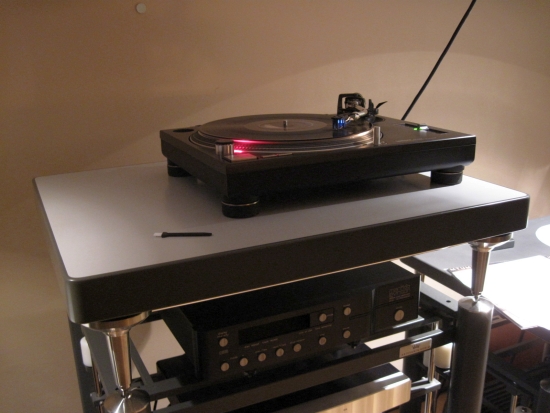
Further upping the game by setting up the SL1200 on the Krion Platform really took things to a whole new level: more accurate bass, better transients, more powerful mids… in spite of the decidedly mid-range SL1210, I think objectively this was a very high-end sound. Of course, the SL1210 needs help from a cartridge that costs more than the entire player, and the Krion Platform. But it wasn’t as satisfying with all records. On balance, I think I prefer the more relaxed sound of the SL1200 set up on the Digital Server Platform, even if that was objectively less high end.
![]()
Avid Volvere with Benz ACE SH
While the Avid Volvere sounded lush and tonally rich, yet dynamically restrained and somewhat dull when paired with the Grado cartridge, the Benz ACE makes for a much better combination. Set up on the Krion Platform, this combination provides the highest end, most accurate sound of all players. Transients are much tighter and there’s much more attack, as well as much better detailing than with the Grado. Dynamics are better, but still not really outgoing. The music still seems to be hitting a ceiling somewhere. I think that’s the effect of the screw-on clamp, squeezing the record to the platter, forcing it flat, which is technically a good thing. It definitely is in case of the TEAC VRDS CD transports. But somehow the Avid’s implementation seems to take away some life from the records. Compared to the Technics SL1210, the Avid is technically better on all accounts, most notably its timbre and tonality, but somehow, in spite of its much thinner sound, the 1210 just sounds more fluid and engaging.
Record quality also plays a big role of course. With full and dynamic sounding records, there’s real emotion with the Avid, too. Anita Baker’s Rapture for example never sounded better. With that album the Avid’s even-handedness combined with the Krion’s neutrality really pays off. However, with less than stellar records, this combination quite quickly becomes unforgiving and too technical, somewhat reminiscent of the Avid when it was set up on the glass platform. I think the Avid + ACE produce sound that is just a little bit too controlled. And the very neutral Krion Platform is not helping covering that up.
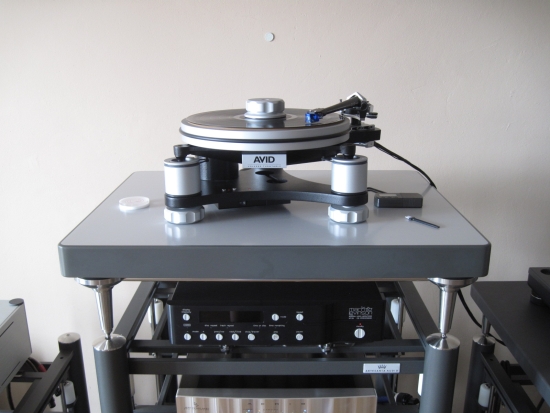
Balance is everything
As indicated above, it becomes more and more evident that balance is everything. Smooth and warm sounding players sound absolutely flabbergastingly fantastic with the Krion Platform, while more recording-critical players can better be placed on a more forgiving (more bendy, in this case) platform such as the Digital Server Platform.
This overly technical sound is likely not entirely caused by the Avid, but more so by this particular Arm-Cartridge combination. I can’t rule out that the ACE is also not the best candidate for this arm/player combination. Ultimately, having also listened to it with the otherwise natural-sounding SL1200, and digging back to old memories of my using the ACE lo in my Michell Gyrodec SE with Tecnoarm, I think that I have more respect for either of the Benz ACE cartridges, than love. In my opinion, they could do with more smoothness, and while they do sound impressive, in the spinners I’ve tried them in thus far, they’re just a bit too dry for my taste.
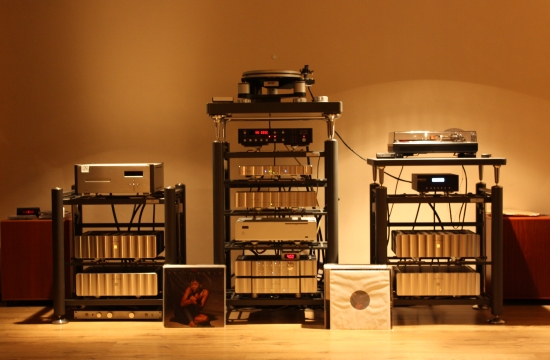
I am not done experimenting with the Avid just yet though. Because I have read multiple reports that state that it can indeed sound very musical, I will obtain some other cartridges for further comparisons. The player might be intrinsically dynamically restrained, but I still should be able to find a cartridge that sounds open and lively, without making the Avid sound overly technical.
I will also listen to various other turntables, both old and new. Coming soon is a Linn LP12, which will likely prove to be a very interesting subject.
But first, let’s move back to digital playback, and see what the Digital Server Platform can do, for a digital server.
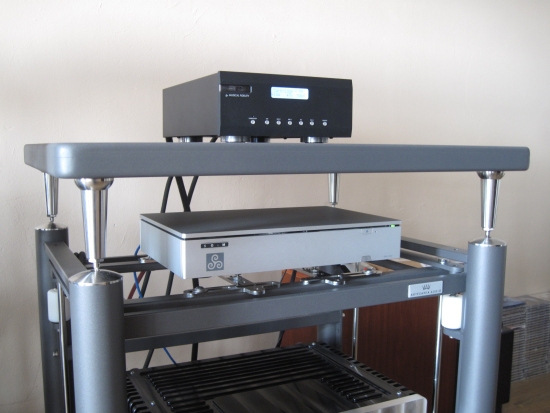
Digital Server Platform
This platform is simpler in construction than the Treated Glass and Krion platforms and is made of MDF, with a layer of neoprene and a special paint. Unlike with the other platforms, its surface is deliberately not smooth, but actually very rough. Interestingly, its effect on the overall system sound is less than that of the other two racks. Perhaps because of the softer materil or also due to the rough surface.
The Server Platform being an MDF construction does mean that it superimposes a more evident character upon the music. But that’s not intrinsically a bad thing.
As described higher up in this article, I have listened to several turntables on this platform, and generally that works very well. Compared to the Krion Platform, using turntables, the Digital Server Platform has a friendlier sound signature, but is also more colored and less precise. Now how does it perform when used for its intended purpose: with a digital server?
Subject of this test is a SOtM sMS-1000u VortexBox music server. This device is quite similar to my resident AAZ UltraFlow, in that the software and the USB soundcard are the same. They do differ in other aspects, also in sound, but on the whole you could say that they are of equal quality but having slightly different characters.
SOtM sMS-1000u placed on Exoteryc Rack
Placed on the Exoteryc Rack directly, and connected to the Rowland Aeris DAC via a KingRex uART USB cable, the sMS-1000u sounds very good: highly resolving, neutral yet rich in tonality, open, airy and unforced.
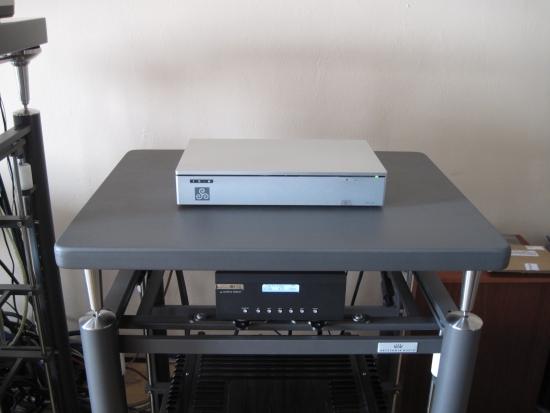
sMS-1000u on Digital Server Platform
Moving the sMS-1000u to the Digital Server Platform (swapping the server and the phono stage) makes for a very different sound. Surely a server (basically a computer) is not supposed to be this sensitive to placement, but I can assure you that it is.
Placed on the Digital Server Platform, the sMS-1000u gains a lot of bass power and heft, a more dynamically/acoustically convincing midrange with piano especially and overall more impressive dynamics and soundstage width. However, it’s not all positive: the soundstage might be large, but is less well-differentiated, especially in the middle and in terms of the layering into the back of the soundstage.
It seems all the added power does come at the expense of differentiation, subtlety and focus. But it is not at all unpleasant: it’s actually a pretty exciting sound. One could even say that the platform livens up the otherwise more factual computer sound, in the same way that it makes the otherwise a little gray sounding Technics SL1200 sound better. On the other hand it is clear that the platform does add color and accentuation to transients. Not in a bad, etchy way though, but for example when playing Bebel Gilberto’s Tanto Tempo title track, which contains some highly EQ’d deep bass, some of the bass notes now boom a bit too heavily, where this is not the case with the server placed on the Exoteryc rack.
Overall, I find that I do prefer the more natural, more unforced, more even sound of not having a platform under the unit at all. I guess you just cannot beat the superbly natural sound of the Exoteryc rack!
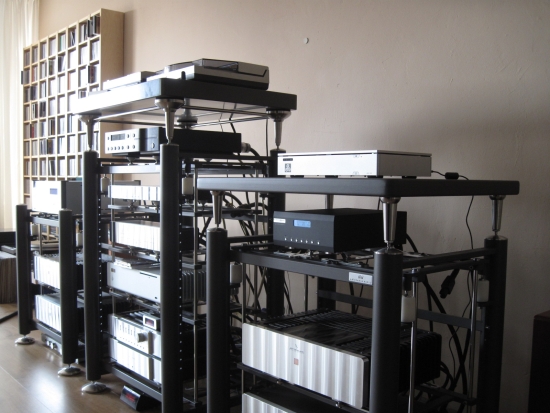
Artesania Dampers
Along with the Turntable Platforms, I received a range of Artesania Dampers, in various weights. In my system I find that I have no need for these dampers, as most of my equipment is already very heavy and either made with solid materials (Jeff Rowland), damped very well (Mark Levinson) or consisting of very thick panels (Wadia). Every now and then a review device comes over, that actually benefits of having a damper placed on top. The featherweight Ayre QB-9 USB DAC is one such device. At the time of its review I did not have the Artesania dampers at hand, so a experimented with Finite Elemente Cerapucs, adding one every time. I forget the optimum amount of Cerapucs, but it was very clear at the time that there is such a thing as the perfect damping weight. Too little and the device sounds lightweight, too much and impulsiveness and dynamic behavior are hampered.
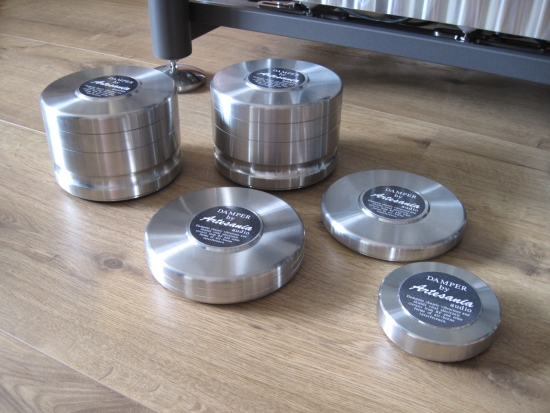
The effect that the Digital Server Platform had on the SOtM sMS-1000u was a trigger for me to try the Artesania dampers. The sMS-1000u itself is already well damped and not lightweight and it is not in need of extra damping, but I figured that damping it some more might have effects on the Platform’s resonance behavior. And I was right!
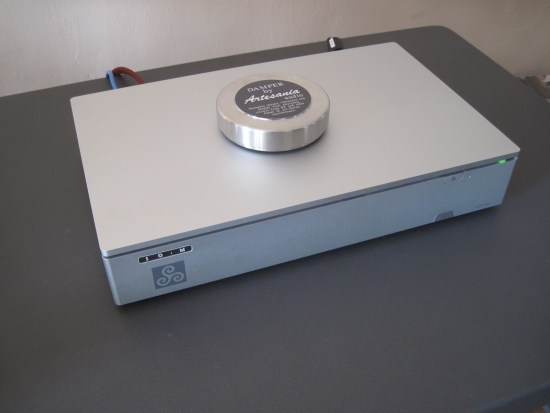
The smallest 1,4kg damper did indeed have an effect: an overall more Rowland-esque sound, which means that the sound seems to be more solid, fuller and more grounded, and less jumpy. I’m not sure if I prefer one or the other but in any event the amount of damping is not overdone: dynamics are still intact. However, it doesn’t help the booming of low bass notes in Bebel’s Tanto Tempo track.
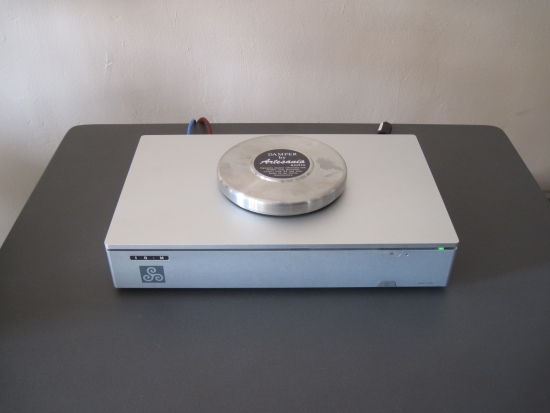
Bigger damper (2,4kg): larger effect. But it’s subtle, and much like the effect of the smaller damper, just slightly more pronounced. The sound becomes calmer and transients seem less sharp but for the most part, the dynamics are still intact. This damper also doesn’t help the booming of low bass notes in Bebel’s Tanto Tempo track.
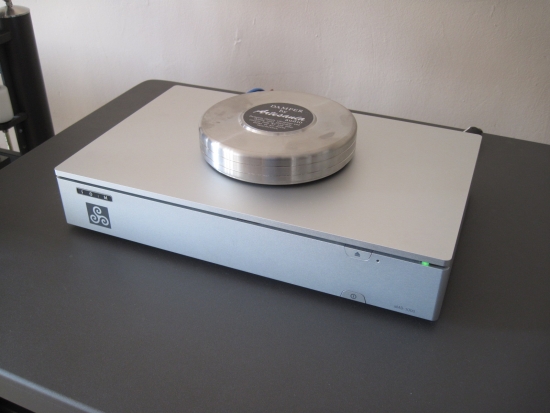
As before: bigger damper (now 3,8kg): larger effect. The differences are still subtle from damper to damper, but now the sound is really starting to change in character. It’s now riper and gentler. It’s an interesting effect that seemingly influences the feeling of richness and color, without actually adding coloration. The only downside is impulsiveness. I feel that this damper is too heavy for the server, while only marginally helping the precision of the low bass notes on Bebel’s Tanto Tempo track.
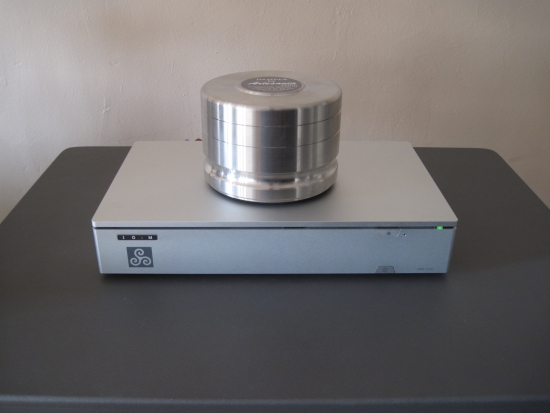
Fun times: exaggeration mode! The DP 20 is the heaviest damper that Artesania sent me. With 12.5kg it feels like I am putting a heavy amplifier on top of the poor music server. Of course this is not the damper’s intended use. Normally it would be used to damp loudspeaker cabinets. I have no dynamic speakers but some friends do, so this calls for a followup review. But for now, let’s see if this super heavy damper can influence the low bass resonances.
While it is obvious that this damper is too heavy for the sMS-1000u, I honestly can’t say that it sounds more “compressed” than with the largest of the small dampers, indicating that there is a certain point at which the extra damping does not seem to change the sound anymore. Bebel Gilberto’s bass notes also sound mostly the same. Insane, actually. But hang on: I have a second super heavy damper! Let’s add it to the mix.
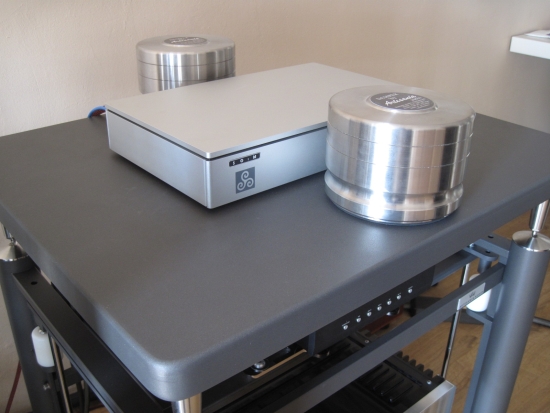
This time, I placed the dampers on the platform itself, in front of and behind the server. This was not bad at all. Dynamics and impulsiveness (transient sharpness) were restored while retaining the more earthed character. Apparently the platform likes to be loaded a little heavier. But still, Bebel’s low bass notes were unchanged. Then I came up with the final variation. And it really did the trick.
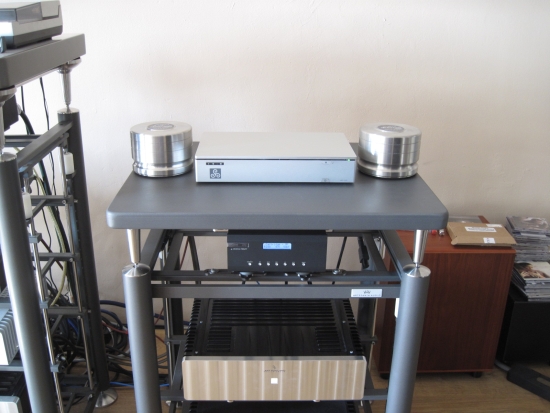
Placed laterally, all of a sudden the bass was under control! The overall sound character was the same as when having the dampers placed front and rear, but this time, Bebel’s low bass notes were much more even, and actually more like they sounded with the server placed directly on the Exoteryc rack. I don’t know a lot about resonance behavior, but it seems that the platform is picking up on the bass coming from the right speaker and subwoofer and gets excited modally, and the big dampers succeed in damping this, but only if placed in the right positions. A platform will never sound like it’s not a platform, but the Krion already proved to me that they can come really close to being neutral, and this little experiment further feeds that feeling.
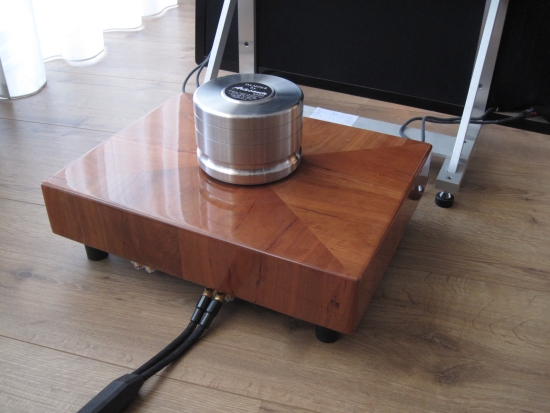
Above: the big dampers work splendidly on top of the wood covers of the Apogee Diva speaker’s crossovers, audibly damping resonances to make for a cleaner sound.
Conclusion
There can be only one conclusion: Artesania accessories and Platforms are quite simply among the very finest audio accessories there are. Needless to say, they work marvelously well with the Exoteryc racks.

